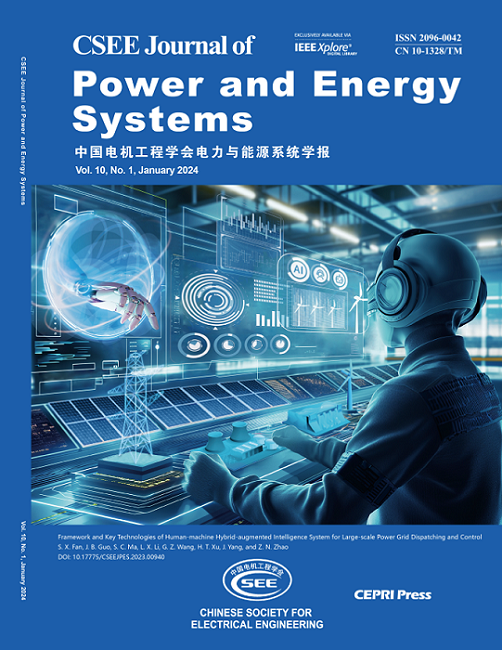Electrical Tracking, Erosion and Fire Retardancy Performance of Silicone Rubber Insulation Containing Aluminum Trihydrate, Graphene and Glass Fiber Additives
IF 6.9
2区 工程技术
Q2 ENERGY & FUELS
引用次数: 1
Abstract
Silicone rubber composite is a priority electrical insulating material used in high-voltage outdoor insulation applications. Low electrical tracking/erosion and poor flame resistance performance of silicone rubber once ignited, substantially reduce its working life. This paper attempts to investigate tracking/erosion performance of room temperature vulcanized (RTV) silicone rubber along with flame retardant parameters using aluminum trihydrate (ATH), graphene nanosheets (GN) and milled glass fiber (GF) additives. The inclined plane test (IPT) was performed in line with criteria defined in IEC 60587 using step-up tracking voltage method while flame retardancy is evaluated according to ASTM E 1354.0 using a cone calorimeter. Results suggest 30% of ATH assists in improving physical tracking/erosion resistance of pristine silicone elastomer rubber by impeding development of leakage current and a great reduction in maximum average temperatures on the surface of RTV2. Further improvement in performance of RTV2 is achieved through introduction of 1% of GN and 5% of GF as seen in RTV4. Moreover, 30% of ATH reduces heat release rate and smoke production rate, and this trend is improved with the introduction of GN/GF. RTV4 has pop up as the most promising silicone rubber composite with excellent electrical tracking, erosion, and flame resistance performance relative to its counterparts in this study.含三水合铝、石墨烯和玻璃纤维添加剂的硅橡胶绝缘材料的电跟踪、侵蚀和阻燃性能
硅橡胶复合材料是高压户外绝缘应用中优先使用的电气绝缘材料。硅橡胶一旦点燃,电跟踪/侵蚀低,阻燃性能差,大大缩短了其使用寿命。本文试图使用三水合铝(ATH)、石墨烯纳米片(GN)和研磨玻璃纤维(GF)添加剂,研究室温硫化(RTV)硅橡胶的跟踪/侵蚀性能以及阻燃参数。根据IEC 60587中定义的标准使用升压跟踪电压法进行倾斜面试验(IPT),同时根据ASTM E 1354.0使用锥形量热计评估阻燃性。结果表明,30%的ATH通过阻碍漏电流的发展和RTV2表面最高平均温度的大幅降低,有助于提高原始硅弹性体橡胶的物理跟踪/耐侵蚀性。RTV2性能的进一步提高是通过引入1%的GN和5%的GF实现的,如RTV4所示。此外,30%的ATH降低了热释放率和烟雾产生率,并且随着GN/GF的引入,这一趋势得到了改善。RTV4已成为最有前途的硅橡胶复合材料,与本研究中的同类材料相比,它具有优异的电跟踪、侵蚀和阻燃性能。
本文章由计算机程序翻译,如有差异,请以英文原文为准。
求助全文
约1分钟内获得全文
求助全文
来源期刊

CSEE Journal of Power and Energy Systems
Energy-Energy (all)
CiteScore
11.80
自引率
12.70%
发文量
389
审稿时长
26 weeks
期刊介绍:
The CSEE Journal of Power and Energy Systems (JPES) is an international bimonthly journal published by the Chinese Society for Electrical Engineering (CSEE) in collaboration with CEPRI (China Electric Power Research Institute) and IEEE (The Institute of Electrical and Electronics Engineers) Inc. Indexed by SCI, Scopus, INSPEC, CSAD (Chinese Science Abstracts Database), DOAJ, and ProQuest, it serves as a platform for reporting cutting-edge theories, methods, technologies, and applications shaping the development of power systems in energy transition. The journal offers authors an international platform to enhance the reach and impact of their contributions.
 求助内容:
求助内容: 应助结果提醒方式:
应助结果提醒方式:


